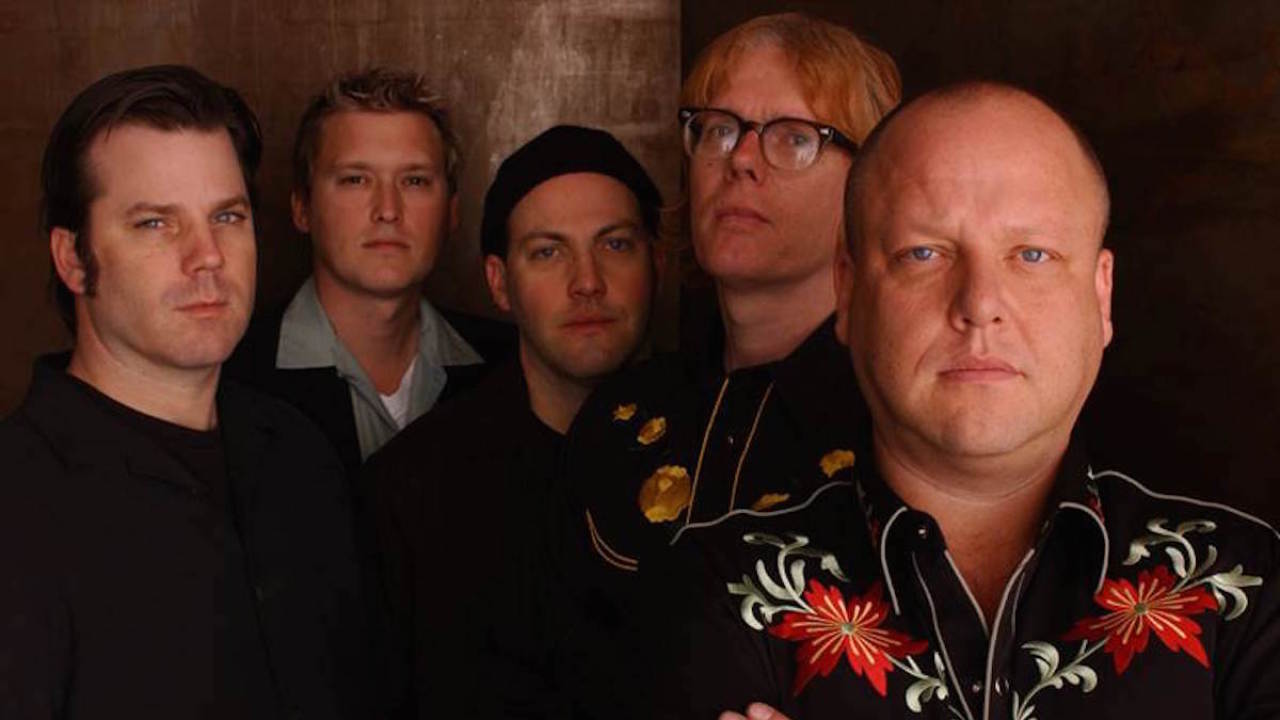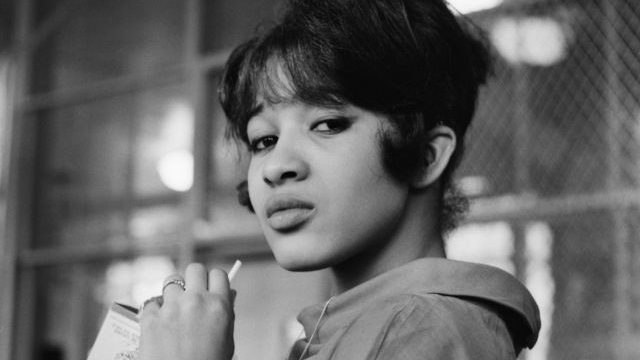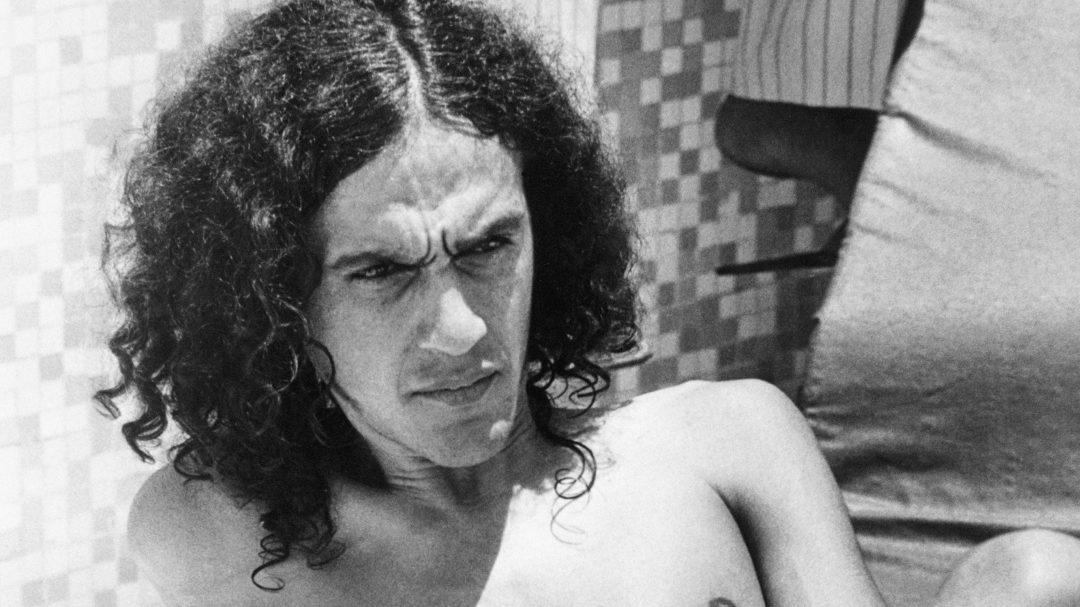
Any understanding of John Lennon is woefully incomplete without knowing his debut solo record; it is one of the most raw, intense, and intimate albums ever created by a major recording artist.
A month-and-a-half ago, I found myself standing outside of John Lennon’s childhood home. I had never been to Liverpool before. Had never been to England, or anywhere else in Europe for that matter. In fact, unless you count Hawaii, I had never even left North America. But here I was, on the other side of the world, standing on the sidewalk in front of a modest home in a relatively quiet suburban neighborhood.
After loitering for a few minutes, we — my wife, my two kids, and I — walked around the corner to Strawberry Field: where a young Lennon would occasionally hop the fence to play on the grounds of the Salvation Army children’s home. There, we had to wait a few minutes for a group of tourists to take their obligatory souvenir pictures before they hopped back on the bus, en route to their next pre-scheduled stop.
After Strawberry Field, we took a longer stroll, partially along Quarry Street, toward St Peter’s Church. It was there, in the summer of 1957, that John’s first group, The Quarry Men, performed at a church fete; and it was there, on that afternoon, that he was first introduced to fifteen-year-old Paul McCartney. After finding the grave of Eleanor Rigby, we grabbed lunch at a nearby Turkish restaurant, and boarded a double-decker bus back toward the city center.
Riding on the top deck — just as John and Paul had done when they auditioned an even younger George Harrison in early 1958 — we passed through Penny Lane, with its roundabout and now-innumerable barber shops. Having already listened to Please Please Me on the drive from London the night before, I listened to With the Beatles as the bus made its way down Lime Street, past the bombed-out church, and toward downtown, where tourists find themselves understandably confused as to where the actual Cavern Club really is.
When in Liverpool, at least as a tourist, it’s hard to forget that you’re in the hometown of The Beatles. And of course, as something of an obsessive, I was aware of it every waking moment that I spent there. However, during my thirty-six hours in Liverpool, I felt particularly drawn to the city as John’s home — almost as if McCartney, Harrison, and Ringo Starr were mere ancillary characters in Lennon’s story. After all, it was Lennon’s house that we visited; his footsteps that we traced in Woolton; his statue that I reluctantly posed for a picture with in front of the not-quite-original Cavern.
The power of Lennon’s personality is both a draw and a curse for Beatles fans. I’m tempted to add ‘at least it is now,’ but it always has been. It was John whose “bigger than Jesus,” remark was warped and twisted into a media firestorm that culminated in Beatle boycotts in the American South. It was John whose naked body stood alongside Yoko Ono’s on the defiantly anti-pop Two Virgins in 1968. It was John who shortly thereafter married Ono — a union that would inaccurately be portrayed as the catalyst for the band’s eventual split.
Today, Lennon’s place in the cultural conversation is equally complicated, at least depending on your level of engagement in such conversations. For instance, if there is a song more simultaneously loved and despised than “Imagine,” I’m unaware of it. But I suppose it’s all a matter of perspective. I’m guessing that the bus of folks at Strawberry Field probably weren’t even aware of the contemporary debate surrounding the more troublesome elements of Lennon’s biography, namely the stories of his temper, and its alleged direction toward his first wife, Cynthia Powell. And if the tour guide was aware of this, he wouldn’t have dared mention it. After all, The Beatles are his livelihood. In Liverpool — and quite frankly, around the world — they’re an industry.
The problem is that — aside from the fact that their mere existence is justified — these conversations are not always had in good faith. They’ve appeared in truly awful journalism for decades, and dominate the cesspools of internet comment boxes. Of course, neither of these places are ideal forums for the nuanced dialogue that their subject demands. The fact of the matter is that John Lennon was an incredibly complex figure, and not just in the “we’re all complicated” sense. Outright abandoned by his father at the age of five, pawned off by his mother (who died suddenly after reentering his life when he was sixteen) shortly thereafter, and thrust into unimaginable fame and wealth by the age of twenty-three, Lennon’s context is not like yours or mine.
But the darker side of his personality is no mere fabrication. He had a notoriously violent temper: one that escalated greatly after his mother’s death. This worked in conjunction with the alcohol and drug abuse that would characterize much of his adult life. Additionally, his sense of humor, while sharp, could often be unapologetically cruel. He practically invented rock star self-righteousness, while frequently failing to practice what he preached. And, most significantly, he was far from a model husband and father; and though any single instance of physical or emotional abuse is utterly indefensible, Lennon detractors have blown these elements of his biography grossly out of proportion.
To his credit — if not his exoneration — Lennon himself was generally the first to admit these faults. In his famed final interview — conducted two days before his death in December 1980 — Lennon expressed disgust at the more regrettable aspects of his youth. He also knew himself well enough to acknowledge that, even at the wisened age of forty, he very much remained a work in progress.
Likewise, Lennon often addressed his shortcomings in his life’s work. As far back as 1963’s “There’s a Place,” Lennon’s Beatle-era songs display a level of introspection that was virtually non-existent amongst pop songwriters up to that point. Throughout the band’s discography, tracks like “Help!,” “Norwegian Wood,” “Getting Better,” and “I’m So Tired” are packed with references — both coded and overt — to his struggles. And with the breakup of The Beatles in early 1970, Lennon was cleared to pursue his most personal project to date: his debut solo record, Plastic Ono Band. No single item in his catalog — with or without The Beatles — is more raw, more intense, or more personal. Any understanding of John Lennon the Artist or John Lennon the Man is incomplete without knowing it.
If there was ever any doubt that Julia Lennon’s absence loomed over her son long after her death, Plastic Ono Band’s bookend tracks confirm it. Opening with the harrowing “Mother,” and closing with the resigned “My Mummy’s Dead” (with a blunt reference in between on “I Found Out”), Julia’s presence on this record is arguably even greater than that of the woman on its cover, whose surname graces the title, and who provided its “wind” (according to the liner notes). “Mother” is the headliner here, and for good reason. It’s a veritable Rosetta Stone, not only for Plastic Ono Band, but perhaps for Lennon’s entire body of work. But while it may come off as singularly focused, “Mother” is omnidirectional, turning its attention toward Lennon’s absentee father, and ultimately toward himself in its final verse:
Children, don’t do what I have done
I couldn’t walk, and I tried to run
So I, I just got to tell you
Goodbye, goodbye
While this is almost the same exact songwriting trick that Harry Nilsson — who Lennon shared mutual admiration for, and whom he would ultimately befriend and collaborate with — had already pulled off in his own “1941,” Lennon’s grief and regret are both palpable here. If the lyrics alone didn’t convey it, the aggrieved vocalizations in the song’s final minute — borne of John and Yoko’s then-recent participation in Arthur Janov’s primal scream therapy — drive Lennon’s pain home.
The intensity of this coda is never again matched on Plastic Ono Band, but it is approached on several occasions: “I Found Out” contains the aforementioned blunt reference to parental abandonment, as well as what are widely believed to be swipes at both Paul McCartney (“I’ve seen religion from Jesus to Paul”) and George Harrison (“Old Hare Krishna got nothing on you”); “Working Class Hero” stands among his most acerbic and confrontational pieces; “Well Well Well” again employs screaming, albeit in a less gut-wrenching context.
But Plastic Ono Band also contains moments of grace and beauty. “Hold On” is a charming pep talk to both himself and Yoko, that — along with its completely unexplained “COOKIE!!!” outburst — could have fit on the White Album. “Isolation” is both poignant and touching. “Love” — which finds John joined on piano by Phil Spector, whose production throughout is shockingly spartan — is simply gorgeous. And while it’s caught somewhere between the White Album’s “Julia” and Imagine’s “Oh My Love,” — both of which are superior — “Look at Me” is charming enough to have made it into Wes Anderson’s The Royal Tenenbaums.
Then there’s “God.” Anyone already exasperated by John’s sense of self-importance is bound to be pushed away by Plastic Ono Band’s penultimate track, but it’s a stunning composition, as well as performance; as an aside, Ringo Starr’s drumming is excellent throughout the album, but he was particularly proud of his work on this piece, and rightfully so. As Lennon runs through the list of the icons that he has disavowed, the song builds in intensity, before its climactic declaration, “I don’t believe in BEATLES…”
And then there’s a pause, all while the knife stays plunged in the hearts of millions for whom John’s previous project meant the world. The kind of people who travel across the globe to stand outside of a semi-detached home in an otherwise quiet neighborhood. The kind of people who are pained to hear of his detachment from Julian, his infidelity to Cynthia, his swipes at Paul and George, because his art means that much to us, and we hope against hope that it emerged from a place of purity and sincerity. Then he returns:
I just believe in me
Yoko and me
That’s reality
You can retrace the steps of his childhood with nary a second glance from the folks in Woolton. You can scrawl a message on the gates outside of Strawberry Field. You can stand outside of Abbey Road, as I did, and contemplate what it would be like to be on the other side of those walls, inside of Studio Two — just thirty feet away — and feel the room where that catalog came to life. But like I said, any understanding of John Lennon is incomplete without knowing this record. And ultimately, to know Plastic Ono Band is as close as you or I will ever get to knowing John Lennon, warts and all.




